
Spain is a country that ranks high in numerous “most” lists in the world. One of them is that this country is among the world’s most ideal vacation or tourist spots. Learn more about this country in this Spain facts article!
- Spain has a population of 46.7 million.
- Spain was founded in 1512.
- It has the 5th largest economy in the European Union and the 13th largest in the world.
- The literacy rate in Spain is over 98%.
- The national anthem of Spain does not have words.
- People from Spain are called Spaniards or Spanish people.
- The official name of Spain is Reino de España which translates to “Kingdom of Spain.”
- Spain covers a total area of 505,992 km².
- Spain is the 4th largest country in the whole of Europe.
- Since 2002, Spain has used the Euro as its currency.
- Spain’s economy follows capital mixed.
- In 1955, Spain officially joined the United Nations (UN).
- It later joined the North Atlantic Treaty Organization (NATO) in 1986.
- In the same year, Spain became a member of the European Union.
- Spain follows the Central European Time (CET) timezone.
- Spain’s tourism industry is the 2nd largest in the world, drawing in about 40 billion Euros per year.
- Spain is second only to Switzerland in being the most mountainous European country.
- While soccer is the national sport in Spain, locals call it “futbol.”
- Over 1,400 years ago, the quill pen first originated in the Kingdom of Spain.
- Spain led as the first European country to ban smoking in the workplace.
Spain Facts Infographics
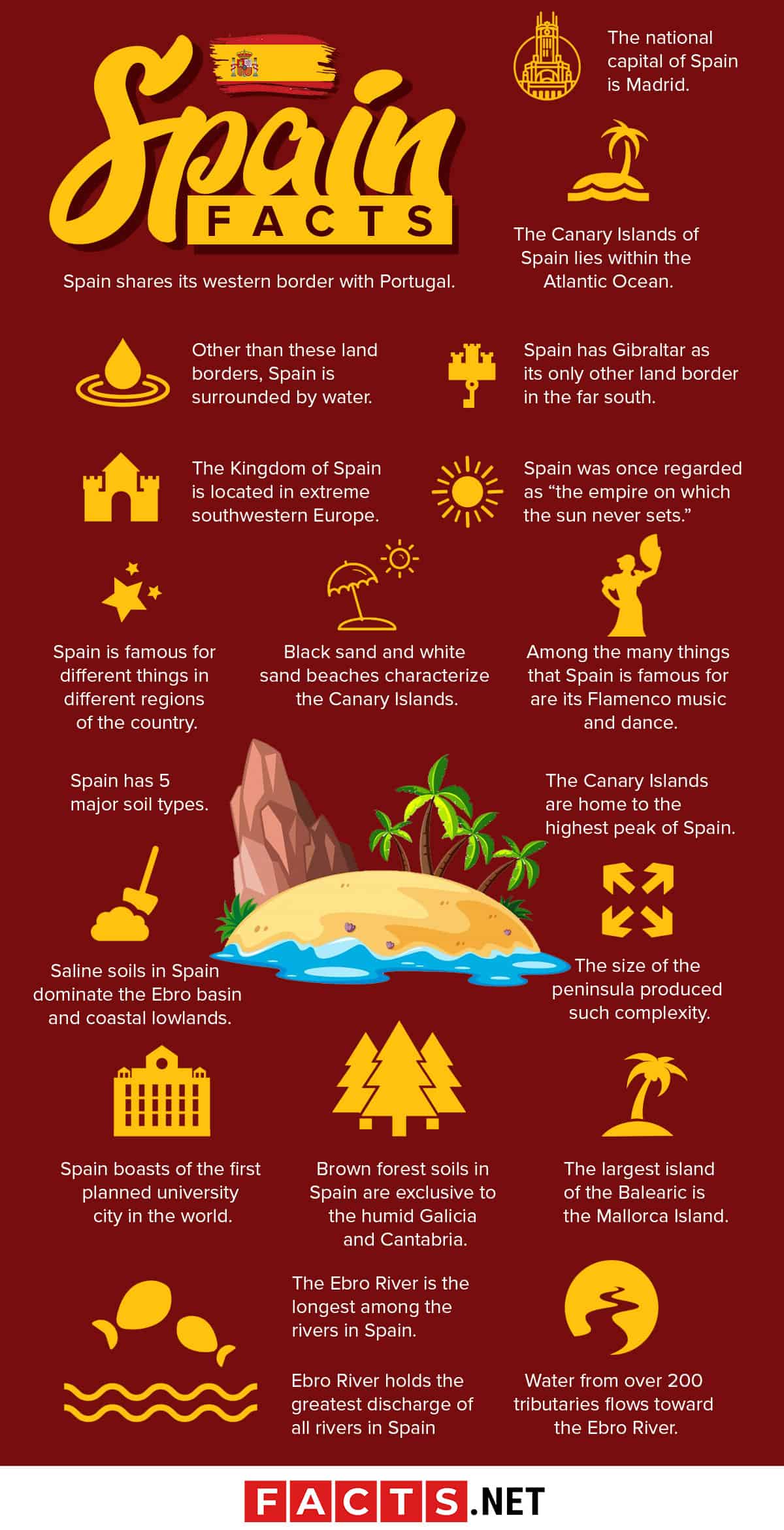
The Kingdom of Spain is located in extreme southwestern Europe.
Spain is 85% of the Iberian Peninsula, an area it shares with Portugal. Aqueducts, ancient ruins, and castles characterize the countryside of Spain. Meanwhile, its cities are resoundingly modern today.
Spain was once regarded as “the empire on which the sun never sets.”
This label was due to the several territories that Spain conquered from the late 15th to the mid-20th centuries. Present-day countries in Europe, the Americas, Africa, Oceania, and even the Philippine Archipelago were once Spanish territories. With the geographical vastness of the country’s grasp, at least one part of the empire was in daylight at any given time.
Among the many things that Spain is famous for are its Flamenco music and dance.
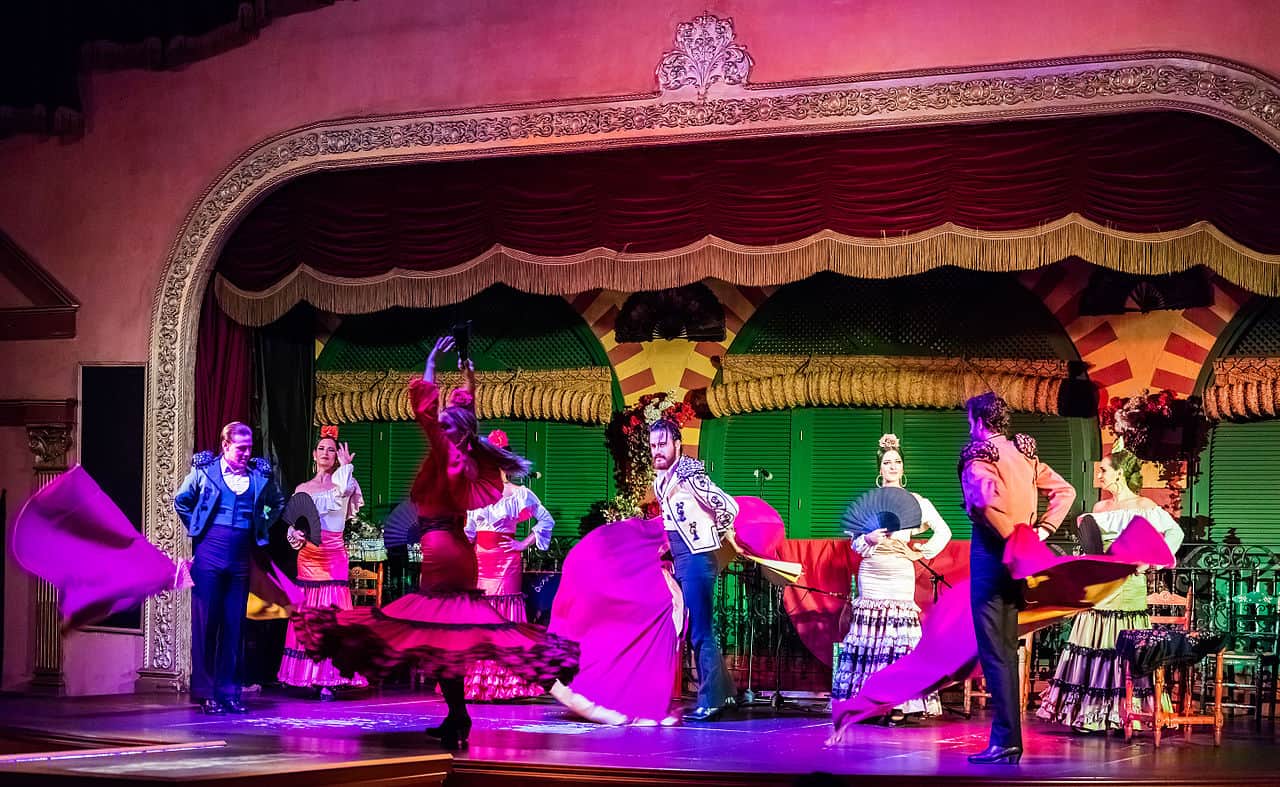
Other things on the list are architecture, art, bullfights, food, horses, its islands, literature, its Moorish heritage, wines, and soccer (futbol).
Spain is famous for different things in different regions of the country.
For one, the Andalusian capital of Sevilla (Seville) is a heritage of musical culture and traditional folkways. Barcelona, the Catalonian capital, is known for its secular architecture and maritime industry.
The national capital of Spain is Madrid.
This city is best known for its winding streets, and renowned museums and bookstores. Its around-the-clock lifestyle is a hard-to-miss factor as well. Aside from being the largest city in Spain, Madrid also serves as the financial and cultural center of the country.
Spain shares its western border with Portugal.
Meanwhile, France lies to its northeast. The principality of Andorra and the great wall of the Pyrenees Mountains separate the two European countries.
Spain has Gibraltar as its only other land border in the far south.
This enclave once belonged to Spain until 1713. Spain ceded Gibraltar to Great Britain in the Treaty of Utrecht at the end of the War of the Spanish Succession.
Other than these land borders, Spain is surrounded by water.
It has the Mediterranean Sea to its east and southeast. By the northwest and southwest of the country is the Atlantic Ocean. Lastly, the Bay of Biscay, an inlet of the Atlantic Ocean, lies north of Spain.
The Canary Islands of Spain lies within the Atlantic Ocean.
Its location is just off the northwestern African mainland. On the other hand, the Balearic Islands lie in the Mediterranean, east of Spain. Other parts of Spain are Ceuta and Melilla. While these small enclaves are in North Africa, northern Morocco, Spain has ruled over them for centuries.
Black sand and white sand beaches characterize the Canary Islands.
The largest island is Tenerife which is dominated by Mount Teide, an active volcano. Beaches on Tenerife are filled with black sand, such as the El Bollullo beach and the El Medano beach.
Other main islands of the group are the El Hierro, Fuerteventura, Gomera, Gran Canaria, and Lanzarote. All the islands have their own beautiful beaches, filled with kitesurfers and windsurfers all year round.
The Canary Islands are home to the highest peak of Spain.
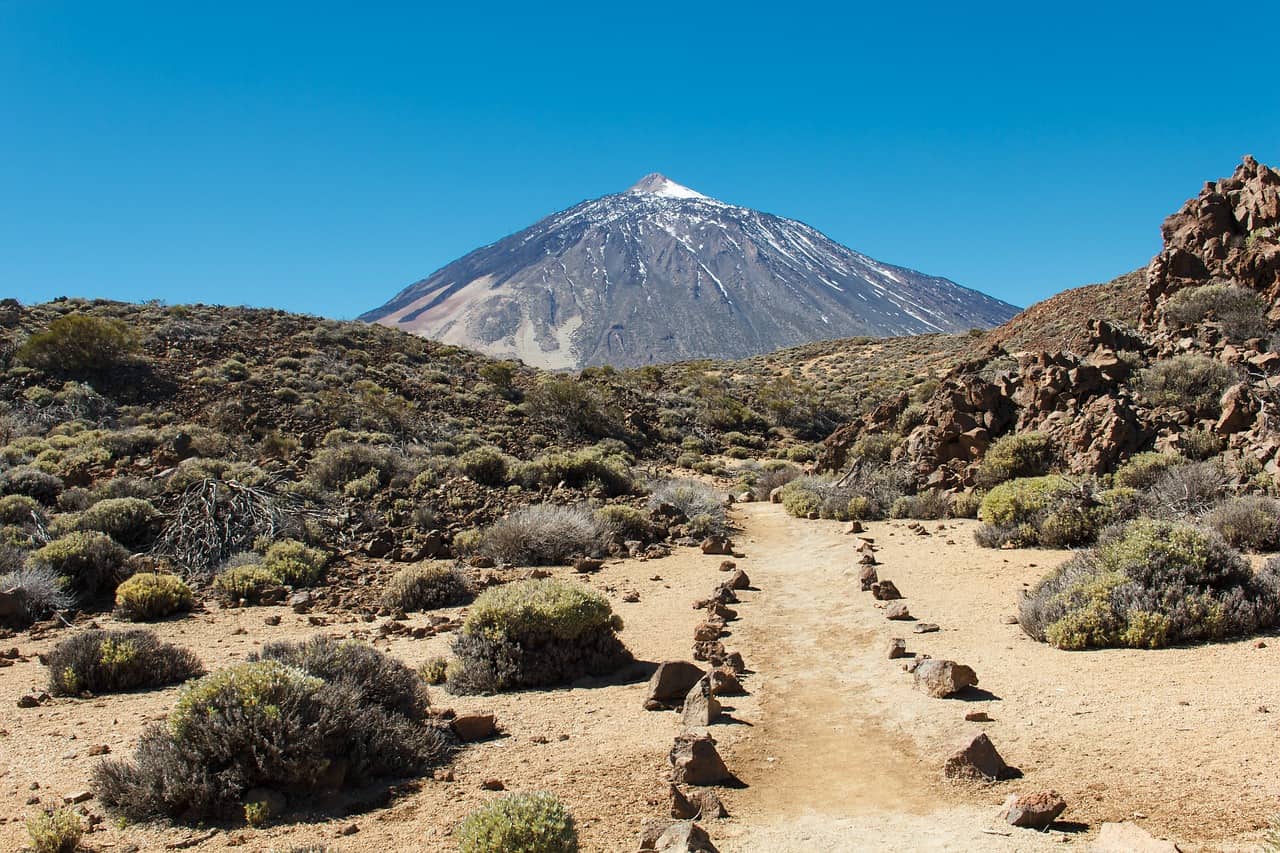
Teide Peak on the island of Tenerife rises to 12,198 ft (3,718 m). Also, the Canary Islands in the Atlantic has a volcanic origin.
The largest island of the Balearic is the Mallorca Island.
Mallorca Island has a reputation for its beaches, picturesque coast, and rampant drinking parties. In the north region of the island is the Serra de Tramuntana mountains. Moreover, Ibiza, Minorca, and Formentera are the other three major islands of the Balearic.
Spain has 5 major soil types.
Among them, two distributes widely but to a limited extent. The alluvial soils are found in the major valleys and coastal plains. Meanwhile, the other one is poorly developed or truncated mountain soils.
Brown forest soils in Spain are exclusive to the humid Galicia and Cantabria.
The acidic southern brown earth is dominant on the crystalline rocks of the western Meseta. Moreover, the development of the gray, brown, or chestnut soils occurs on the calcareous and alkaline strata of the eastern Meseta and of eastern Spain in general.
Saline soils in Spain dominate the Ebro basin and coastal lowlands.
Calcretes, or subsoil zonal crusts usually of hardened calcium carbonate, are particular in the arid regions of the east. These areas are Alicante, Almería, La Mancha, Valencia, and the Ebro and Lleida basins.
The Ebro River is the longest among the rivers in Spain.
In Spanish, its name is Rio Ebro, while in Latin, it is Iberus or Hiberus River. The springs at Fontibre near Reinosa in the Cantabrian Mountains are the origin of the river. This place is in the Cantabria province of northern Spain. Moreover, the Ebro River flows for 565 mi (910 km) in a southeast course down to its delta. Then, the delta is on the Mediterranean coast in Tarragona province midway between Barcelona and Valencia.
Ebro River holds the greatest discharge of all rivers in Spain.
Its drainage basin is also the largest in the country at 33,000 sq mi (85,500 sq km). Ebro River drains about ⅙ of the country as it plunges through the coastal mountain ranges by a series of gorges and defiles. Still, despite its wonders, the Ebro is only navigable upstream for only 15 mi (25 km) from its delta to the city of Tortosa.
Water from over 200 tributaries flows toward the Ebro River.
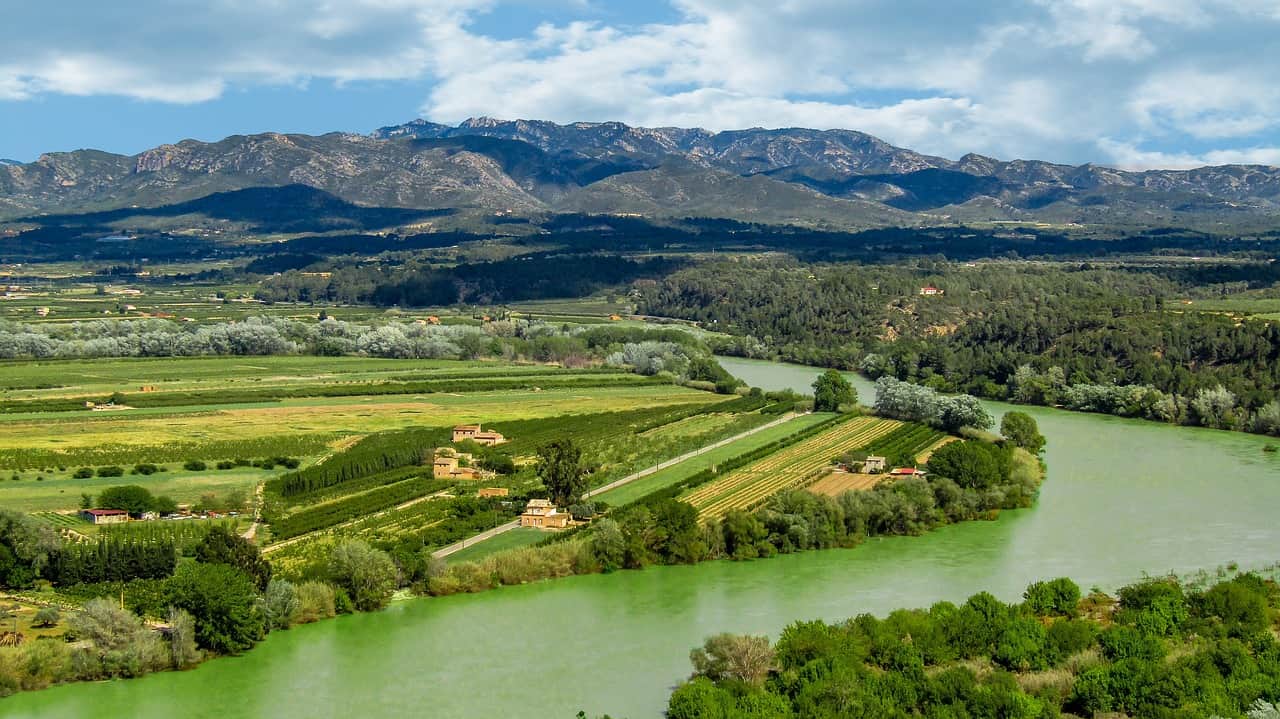
Those on the left bank originate from the rainy Pyrenees, contributing to the majority of the Ebro’s volume. It includes the Aragón, Gállego, and Segre-Cinca rivers. On the other hand, tributaries on the right bank are smaller and come from the Iberian Cordillera.
The largest tributaries of the Ebro River function as hydroelectric power and irrigation resources.
Aside from that, a major dams-system produces a vital portion of Spain’s hydroelectric power, principally in the upper La Noguera valleys. Meanwhile, the extensive lignite deposits in the southeastern lower part of the basin function as a resource of thermoelectric power.
More than 5,000 years of mining has greatly polluted the Rio Tinto River.
Due to the high toxicity of its now overly polluted waters, the river is not able to contain any form of life anymore.
The overlap of a fundamental climatic division by another characterizes Spain.
The humid and semiarid and arid zones stand on one side. On the other hand are the threefold division of the peninsula into maritime, continental, and mountain climates.
The size of the peninsula produced such complexity.
It is indeed large enough to generate such a continental thermal regime. Moreover, its location by the Atlantic Ocean and North Africa exposes the country to both maritime and Saharan influences. The mountainous relief does not only produces its own climatic zones but exaggerates local aridity through the creation of rain shadows on the leeward sides as well.
Spain’s landmarks have a total of 48 UNESCO World Heritage Sites.
Among them are 42 cultural heritage sites, 4 natural sites, and 2 mixed heritage sites.
Spain is home to the oldest still-operating lighthouse in the world.
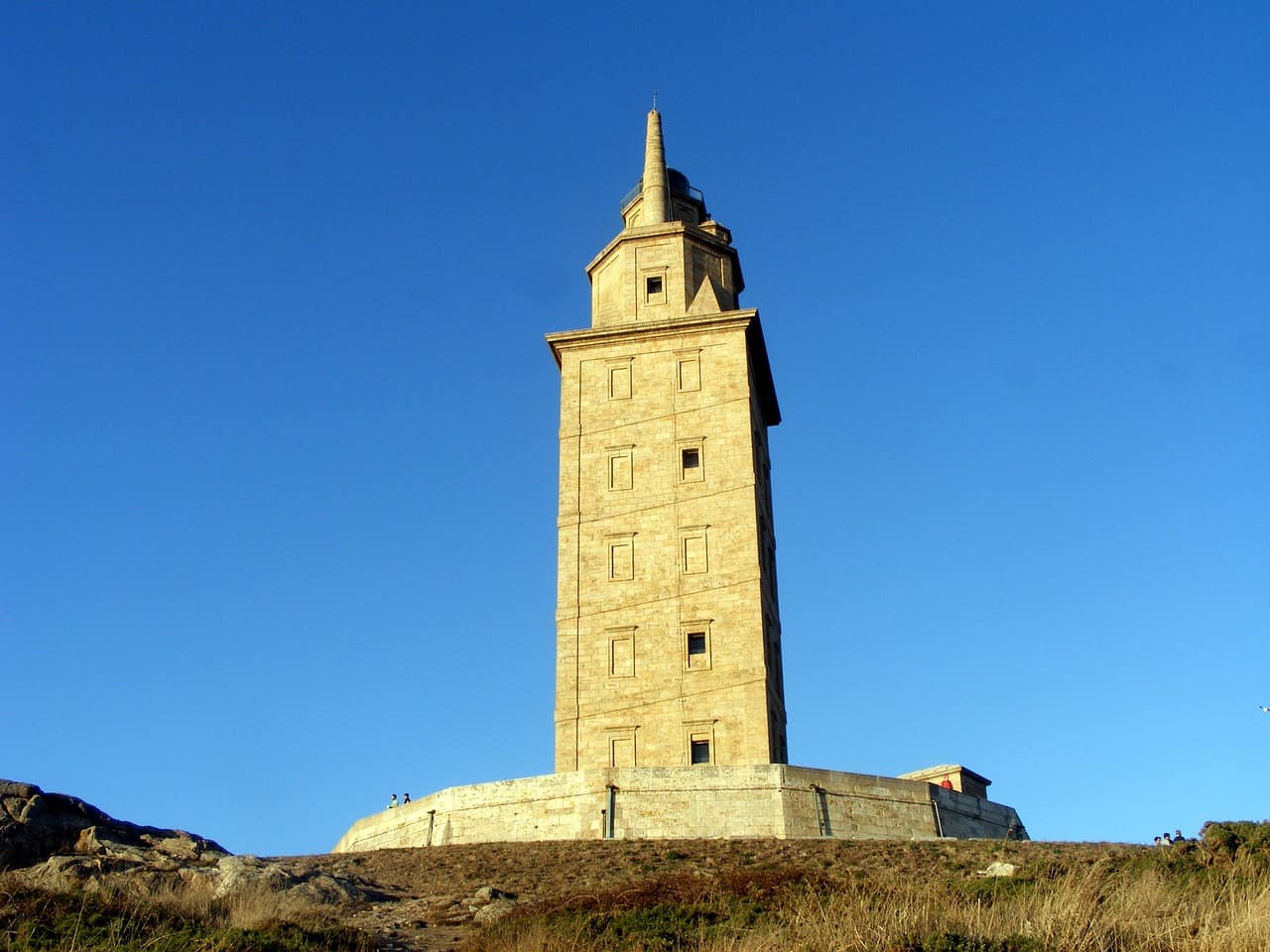
The Tower of Hercules or “Farum Brigantium” is not only a lighthouse but is a Spain landmark as well. Established in the late 1st century AD, it is located at the entrance of La Coruña harbor in northwestern Spain.
Spain boasts of the first planned university city in the world.
Founded in the early 16th century, Alcalá de Henares is located 35 km (22 mi) northeast of Madrid. It houses the University of Alcalá and the University and Historic Precinct of Alcalá de Henares, which is a dedicated UNESCO World Heritage Site.
Spain is home to the third oldest university in the world.
Since its founding in 1134, the Universidad de Salamanca has executed continuous operations. As the top-ranked university in Spain, the University of Salamanca attracts both local and foreign students, undergraduates and graduates alike.
Spain was supposed to be the original home of the Eiffel Tower.
However, the city was not that fond of the idea. Hence, the iconic landmark was constructed for Paris instead.
5 languages are spoken in Spain.
The official language and most widely spoken language in the country is Castillan. However, it is generally known as “Spanish” outside of Spain. Aside from that, the constitution of Spain also allows autonomous communities to recognize dominant regional languages as well as dialects as official languages alongside Castillan. They are Galician, Basque, Aranès, and Catalan.
Castillan began as a dialect only spoken in northern Spain.
Containing many Arabic-origin words, it eventually became the language of the court of kingdoms of Castile and León in the 12th century. Further, Castile’s dominance within Spain paved the way for it to become the official language of the state.
The Catalan language is spoken in over ⅘ of the population in Catalonia, Valencia, and the Balearic islands.
It has close relations to the Occitan (Provençal) language spoken in southern France. Still, there are differences in how Catalan is spoken among the 3 different regions. In the 1980s, political disputes arose contesting whether Valencian was a distinct language or a Catalan dialect.
The Galician language (Gallego) is spoken in the northwestern corner of Spain.
Closely related to Portuguese, the Galician language has been influenced bu Castillan Spanish throughout the modern period. It also served as the language of courtly literature until the Castillan displaced it in the 14th century.
Euskera is the most distinctive language spoken among others.
It is neither a Romance nor an Indo-European language. Predating the arrival of the Romans in the country, Euskera prevailed until the end of the 19th century mostly in the countryside. The Euskera language had no significant literary tradition, hence its difference among other peninsular languages.
In 1978, Euskera became the official language of the Basque Country.
Since that period in the 20th century, Euskera became more popular. Increased use of the language prospered in journalism, literature, and even in the electronic media. Further, the regional government signed a policy to extend the use of Euskera in education and public administration.
Spanish is widely used in 22 countries.
They are as follows: Argentina, Bolivia, Chile, Colombia, Costa Rica, Cuba, Dominican Republic, Ecuador, El Salvador, Equatorial Guinea, Guatemala, Honduras, Mexico, Nicaragua, Panama, Paraguay, Peru, Puerto Rico, Spain, Uruguay, Venezuela, and Western Sahara.
Spanish is the third most commonly used language in the world.
Coming after Mandarin and English, there are more than 470 million Spanish speaking people in world.
The clothes Spanish people wear have both traditional and modern influences.
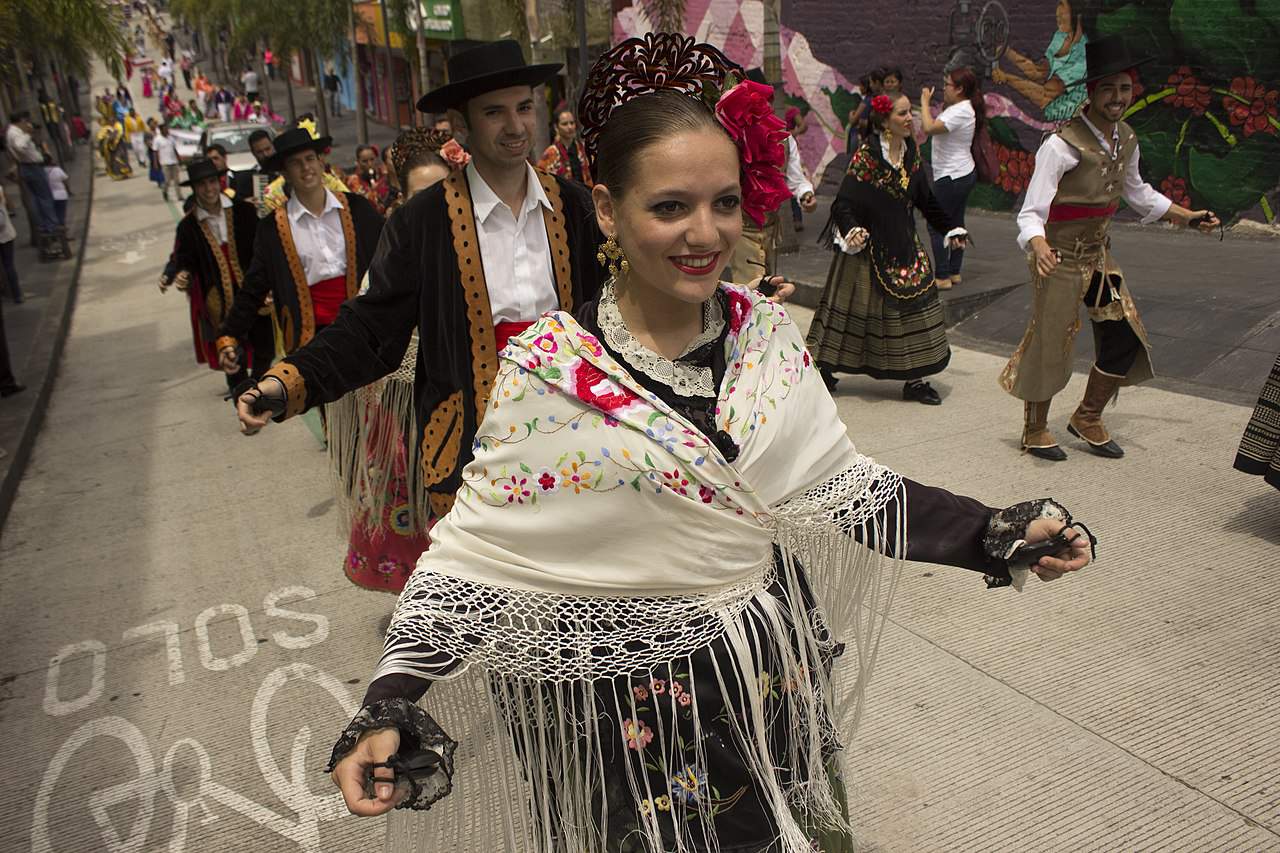
Young Spaniards living in urban centers usually wear Western clothing like jeans and summer dresses. Still, numerous traditional ensembles keep the Spanish culture alive. Some of them are the Zamarra, a long sheepskin coat, and the Barretina, a traditional hat of a well-off man in Catalonia. The flamenco dress is the woman’s costume while the Cordoba is a broad-brimmed hat used in Andalusia.
Spain made the siesta tradition popular.
However, siestas have become rarer by the day. People tend to stay at work as they believe it can increase their productivity and keep the economy thriving more this way.
Many Spanish women keep their maiden names after getting married.
Still, the children born within the marriage take the husband’s last name. Hence, the mother’s maiden name ends up being dropped after one generation.
Spanish culture bears influence from both religion and local traditions.
Among the most commonly known Spain facts about Spaniards is how they are known to be polite. It is a tradition to shake hands when meeting and leaving. Showing respect when interacting with older people is characterized by using titles. Moreover, married women wear covenants to the right rather than to the left.
Spaniards have a global reputation for their love of festivals.
They dub these festivals as “Fiestas” and one of them is the Las Fellas. Held in Valencia every March, it might as well be the biggest festival in the country. Events on the day include ceremonial farewells, dances, fireworks, and parades. Aside from that, Carnival is another important festival that takes place in the city of Cadiz every 40 days before Easter.
Spain observes numerous national holidays throughout the country.
Some of them are the New Year’s Day on January 1st, the Epiphany on January 6th, and Labor Day on May 1st. Later in a year, they also commemorate Constitution Day on December 8th and Christmas Day on December 25th.
Spain has the Running of the Bulls festival annually.
Held in July, this festival takes place on St. Fermina’s Day. More than a million people flock to witness the event and run the streets with Spanish bulls.
Spain holds the world’s largest food fight.
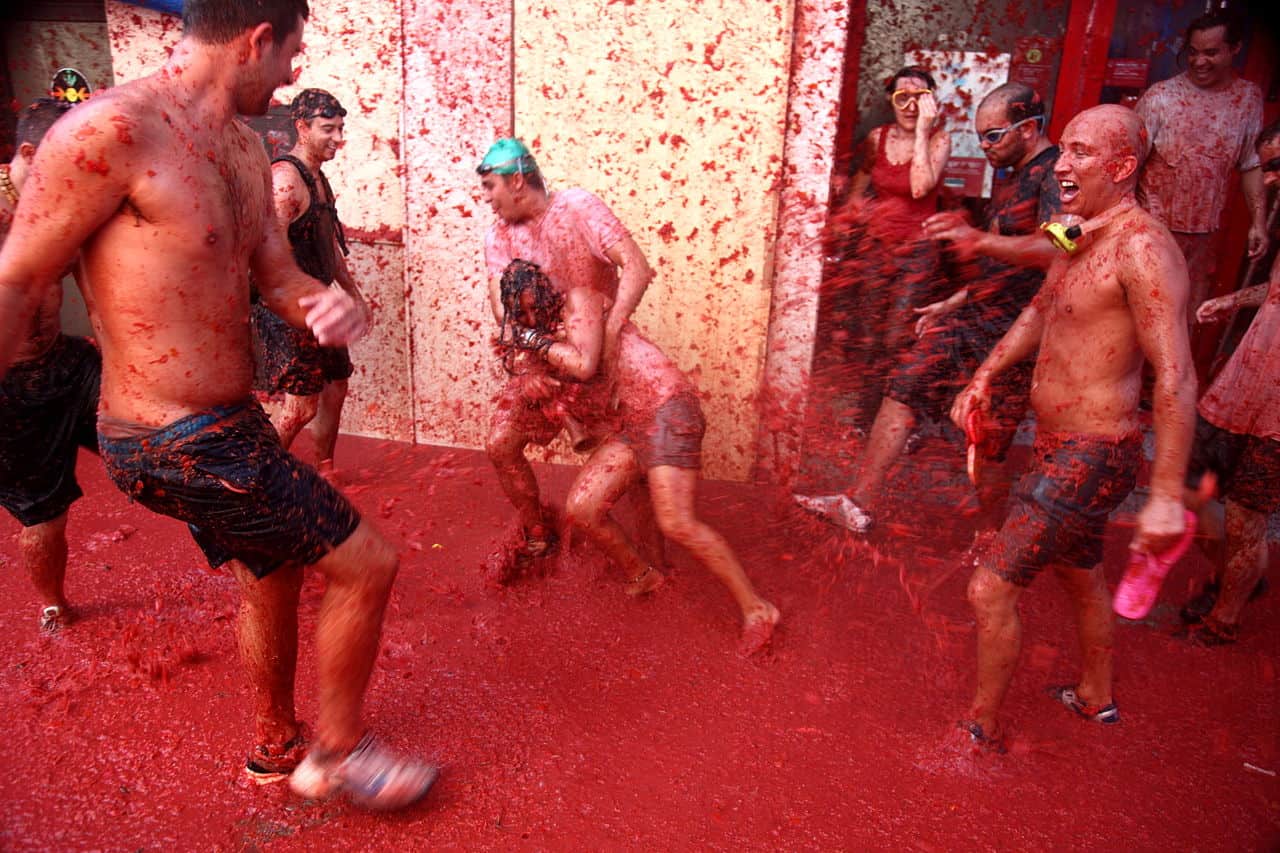
The huge festival La Tomatina occurs every August where participants throw more than 150,000 tomatoes every year.
Jota, Spain’s popular music, originated from the region of Aragon.
It uses castanets, headbands, tambourine, a small traditional guitar. Other Spain facts that trace their origin from Aragon are pole dance and Dulzaina.
Traditional flamenco music and Seguidilla dance style originated from the region of Andalusia.
The Sephardim and couplets are other popular genres that came from this Spanish region. Some of the most outstanding Andalusian musicians are Carlos Cano, Javier Ruibal, Luis Delgado, and Joaquin Sabina.
The Romani people from Catalonia take credit for the creation of the Rumba Catalana.
Meanwhile, the Catalan rock is the popular musical genre among young people from the region. Jota is famous among locals and local bands in Valencia as well.
Spain boasts of the prestigious art scene from well-known artists.
Antoni Tapies, Joan Miró, Juan Gris, and Salvador Dali are all renowned artists from Spain. However, it can’t be denied that Pablo Picasso is the most famous Spanish artist. His catalog includes ceramics, drawings, paintings, and sculptures.
Liga, Spain’s local football league, is dubbed as “the best football competition in the world.”
The league allows world-famous football teams like Real Madrid and Barcelona to play with superstars like Cristiano Ronaldo and Lionel Messi for Spanish football clubs. Moreover, the Spanish national football team boast of numerous world-class players and even victory in the 2010 FIFA World Cup.
Spain has won the Davis Cup 5 times.
Hence, there is no denying that tennis is another popular sport in the country. One of the Spanish record team players is Rafael Nadal who even won in the 2008 Summer Olympics.
Bullfighting is a recognized sport in Spain.
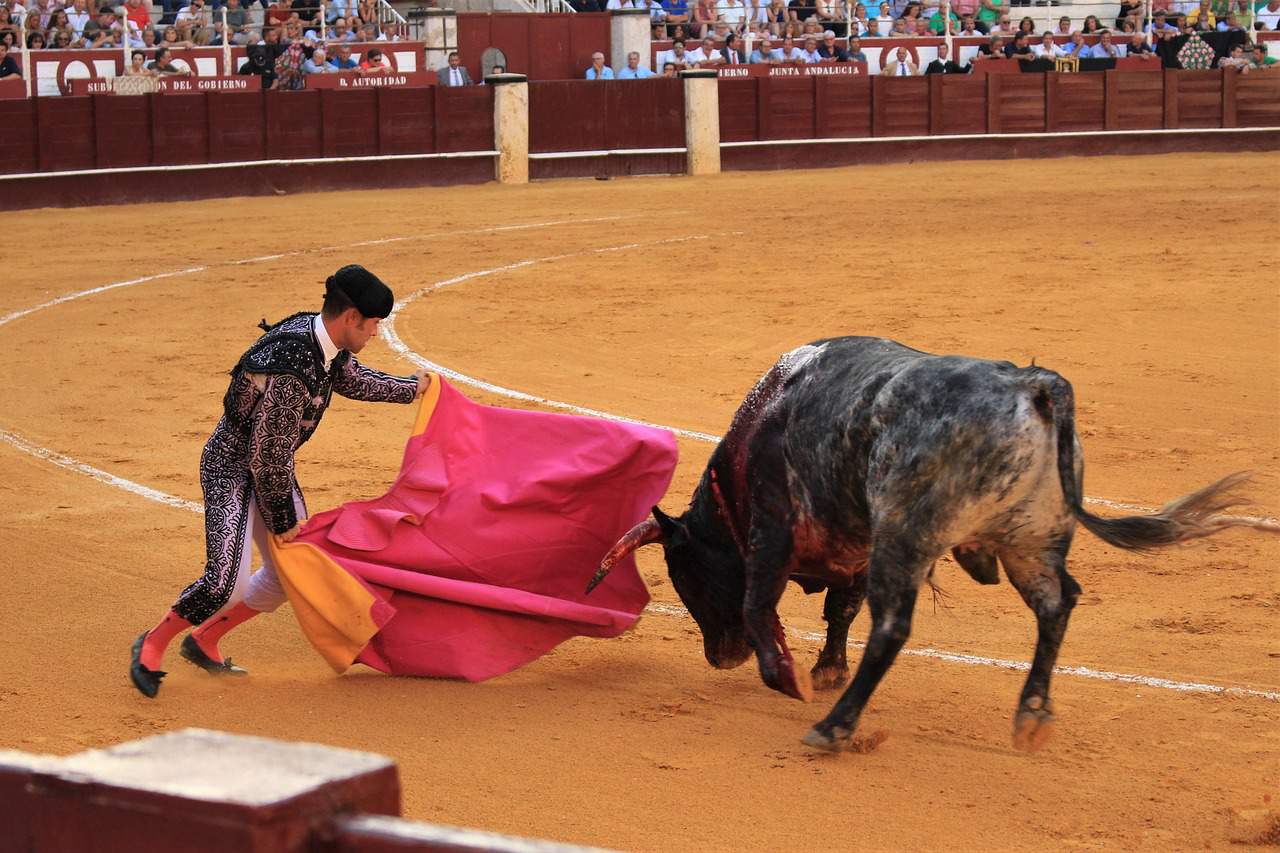
Some spectators even regard these events as a work of art in recognition of the bullfighters’ colorful outfits and how they perform in the ring.
Artists and athletes are not the only famous people from Spain.
Saint Teresa of Avila, for one, hails from the country. Other celebrities that are famous people from Spain are actor Antonio Banderas, actress Millie Bobby Brown, and record producer Enrique Iglesias. Aside from being athletes, players like Pau Gasol, and Rafael Nadal have gained worldwide attention and fans as well.
The unemployment rate in Spain is over 50%.
Not only is the unemployment rate highest in Europe, but it is also one of the highest rates in the world as well. This number is one of the lesser-known Spain facts.
The economy of Spain thrives on the automotive industry.
Aside from that, the agricultural production, energy, financial services, pharmaceuticals, telecommunication, textiles and apparel, and tourism are other main contributors to the country’s revenue.
Spain is second only to Germany in being the largest car manufacturer in Europe.
Moreover, the leading manufacturers in the country are multinational corporations. They have subsidiaries and production facilities in Spain.
SEAT is the only Spanish automobile manufacturer.
Its headquarters is in Martorell, near Barcelona. The company has been a wholly-owned subsidiary of the German Volkswagen Group.
Telefónica from Spain is one of the largest private telecommunications companies in the world.
A multinational broadband and telecommunications provider, Telefónica has operations in Asia, Europe, and in North, Central, and South America.
Spain has only one remaining department store chain - El Corte Inglés.
While El Corte Inglés hails as the largest department store group in Europe, it ranks 4th in the world list. Its headquarters is located in Madrid.
Inditex, one of the world’s largest textile companies, has headquarters in Arteixo, A Coruña, Galicia.
It has ZARA as its flagship store which is a clothing and accessories retailer. Aside from that, it also owns clothes manufacturing company Massimo Dutti, fashion store Bershka, and clothing brand Stradivarius. The undergarments company Oysho, fashion accessories and garments manufacturer Uterqüe, and clothing and accessories retailer Pull and Bear are all part of Inditex as well.
Madrid Stock Exchange is the largest and most international exchange in Spain.
The Spanish name for it is “Bolsa de Madrid.” Meanwhile, Banco de España is hailed as the Spanish Central Bank.
Spanish food is a hodgepodge of Andalusian, Jewish, and Roman traditions.

Moreover, it has many similarities with Mediterranean cuisine. Other Spanish food staples are the use of onions and garlic in meals as well as the participation of wine.
Spain reigns as the largest olive oil producer in the world.
Of the world’s supply of olive oil, around 45% come from Spain. Hence, there is no wonder why the use of olive oil is a common feature in Spanish cuisine.
Beans, peppers, potatoes, and tomatoes star as the main ingredients in most Spanish dishes.
Pickles and snacks are among the popular dishes as well. Tapas, on the other hand, can be served either hot or cold in bars and restaurants. Moreover, numerous top chefs hail from Spain. Some of them are Ilan Hall, Karlos Arguinano, Penelope Casas, and Sergi Cola.
The government of the Kingdom of Spain is a constitutional monarchy.
The constitution of December 6, 1978 defines the government. Moreover, Spain has the king as the head of state and the commander-in-chief of the armed forces.
The Cortes Generales, the parliament, is the highest legislative body in Spain.
Consisting the body are the Senate (Upper House) and the Congress of Deputies (Lower House).
The 1978 Constitution placed Spain in a unitary state.
It means that the central government is the supreme authority. And, the administrative divisions of the country only practice powers that the central government rules to delegate. This category covers the municipalities, provinces, and autonomous communities.
Spain did not enter WW2; it remained neutral.
However, the government’s sympathies clearly sided with the Axis powers. Italy declared war on June 10, 1940, and Spain followed suit in declaring non-belligerency. In practice, it meant supporting the Axis countries. Spain has bargained its entry in the war from then in June 1940.
Its reliance on U.S. imports was mainly why Spain was reluctant to join the war.
Back then, the country was still in recovery from its civil war. Franco acknowledged that his armed forces would not be able to defend the Canary Islands as well as Spanish Morocco from a British attack.
In 1941, Franco allowed Germany to recruit volunteers.
But, only on the guarantee that they only fight against the Soviet Union and not against the western Allies. It eventually birthed to the Blue Division which fought as part of the German army on the Eastern Front between 1941-1944.
Spanish policy in the WW2 returned to “strict neutrality” when odds of the war started to turn against the Axis.
In 1944, the U.S. pressured Spain to halt tungsten exports to Germany and withdraw the Blue Division. This move led to an oil embargo which forced Franco to yield. After the war, Spain was banned in joining the newly formed United Nations. Their wartime support for the Axis earned them isolation by many other countries until the mid-1950s.
Spain sold Florida to the U.S.
It was under the Florida Purchase Treaty which Spanish minister Do Luis de Onis and U.S. Secretary of State John Quincy Adams signed. Within the document, Spain agreed to cede the remainder of its old province Florida to the United States.
Spain once lost Florida when it entered the French and Indian War in favor of France.
The British acquired the now American state through the first Treaty of Paris in 1763. However, 20 years of British rule ended when the Second Treaty of Paris returned Florida to Spain. The said treaty also ended the American Revolution in 1783.
After American independence was achieved, Spain’s hold on Florida became weak.
This weakness came side by side with the numerous boundary disputes that developed between the two countries. Years of negotiations ended in 1819 when Secretary of State John Quincy Adams signed the Florida Purchase Treaty. With that, the U.S. was able to buy Florida for about $5 million.
On September 16, 1810, Mexico gained independence from Spain.
Along with freedom came progressive priest Miguel Hidalgo y Costilla as the father of Mexican independence. His historic proclamation is what urged his fellow Mexicans to take up arms against the Spanish government. Known as the “Grito de Dolores,” it launched decade-long strife that later ended 300 years of colonial rule. Today, Mexico celebrates its anniversary as the country’s birthday.
In 2005, the country became the third in the world to legalize same-sex marriage.
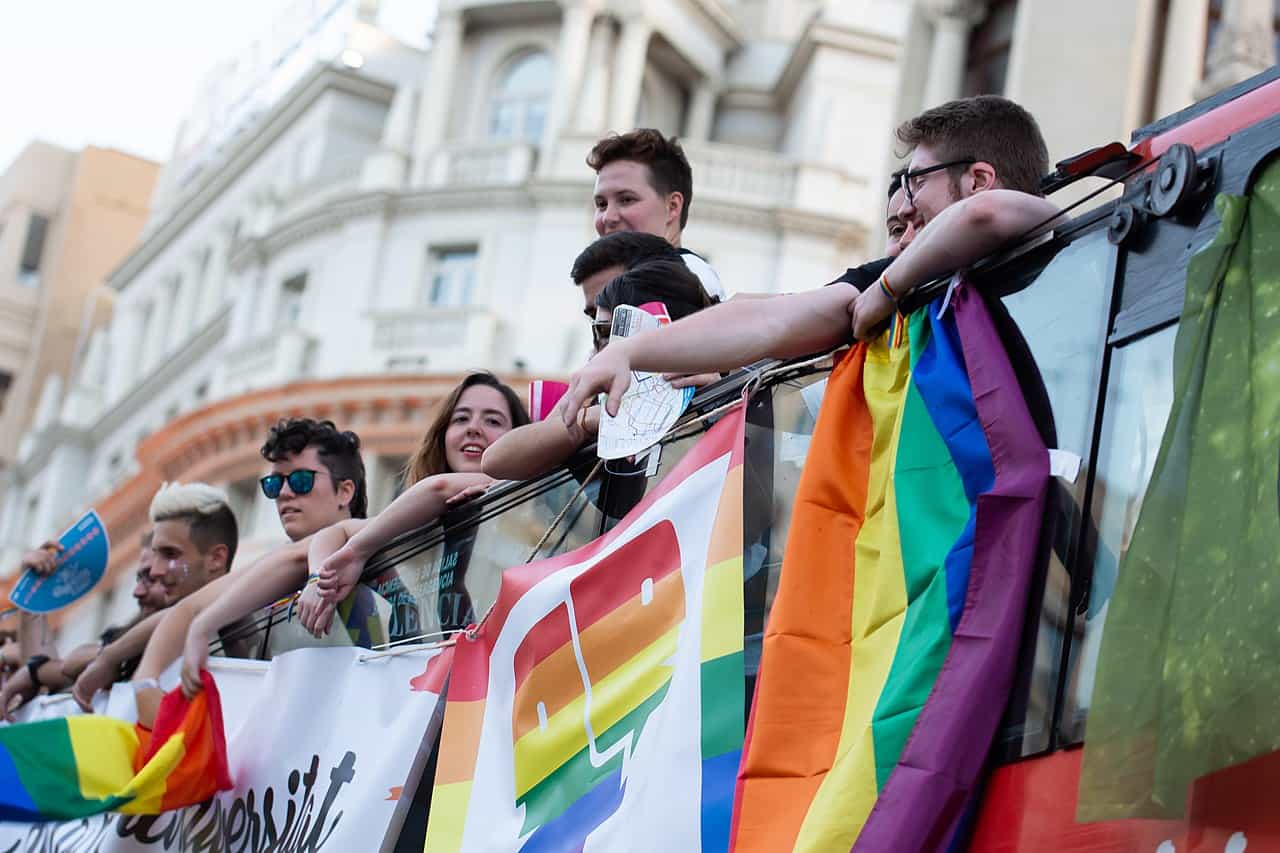
That’s not all. In that same year, Spain also legalized adoption by same-sex couples.
Roman Catholicism has been the official religion in Spain in 589.
However, the dawn of political liberalism in the early 19th century led to a series of conflicts between church and state. It prevailed over land ownership and control of education most. Still, Catholicism remained firm as the official Spain religion until the Second Republic (1931–1936).
General Francisco Franco restored Catholicism as the state religion after the Spanish Civil War.
The religion has retained the status until the proclamation of the constitution of 1978. Since then, Spain held no official religion. However, the Roman Catholic Church continues to receive financial aid from the state.
Spain legalized divorce and abortion in the 1980s.
Along with educational reforms, these events reprised the conflict between the church and the government once again. Thankfully, it is with less intensity now than it had previously.
Roman Catholics make up the vast majority of the Spanish population.
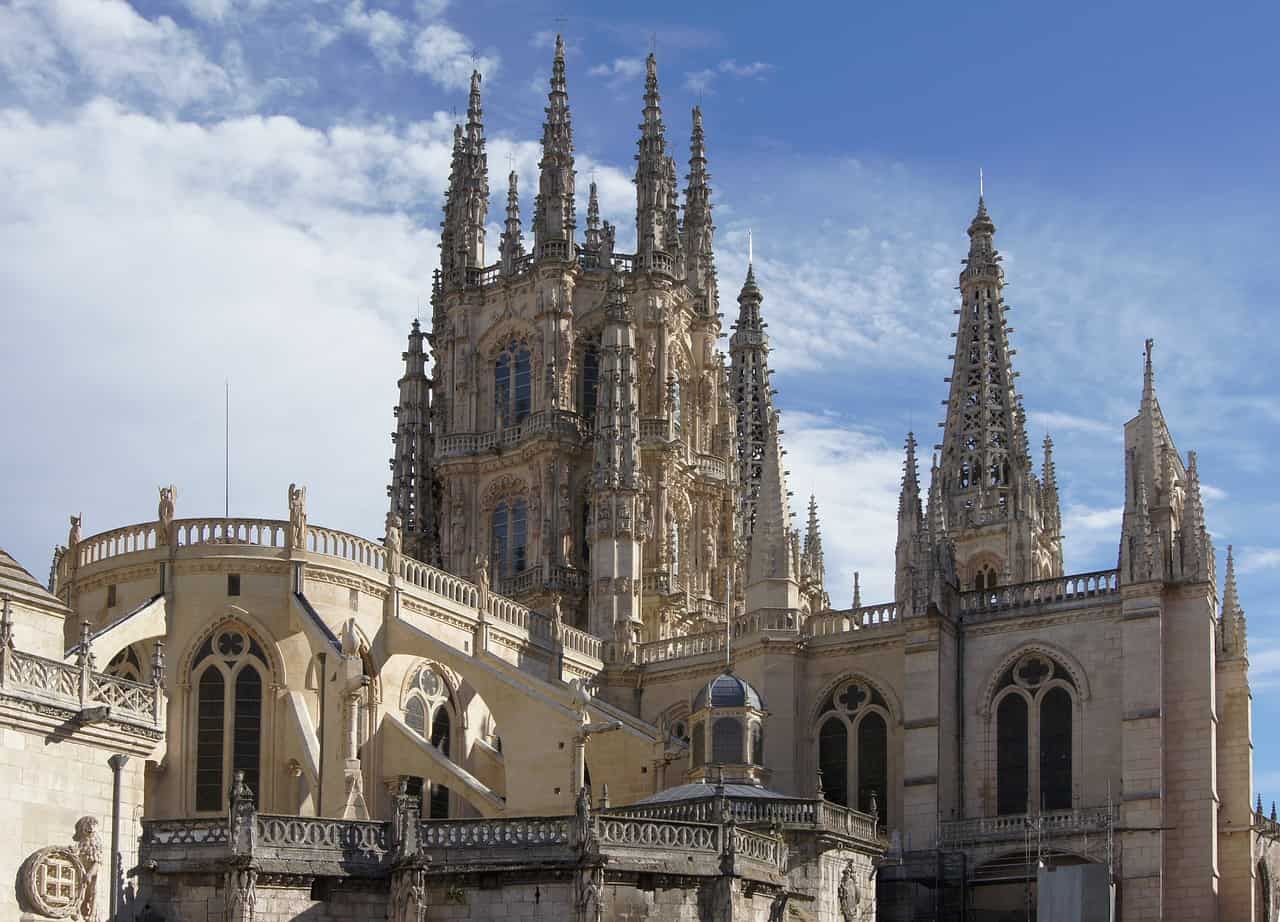
Nonetheless, American-based denominations have been part of Spain since the 1970s as well. Some of them are the Jehovah’s Witnesses, the Seventh-day Adventists, and the Church of Jesus Christ of Latter-day Saints (Mormons).
Immigration has paved the way for the growing numbers of Islam adherents in Spain.
In the late 15th century, inquisitor general Tomás de Torquemada convinced the country’s rulers to ostracize any Jew who refused to be baptized. It made about 100,00 Jews flee Spin during the Spanish inquisition.
The Spanish Inquisition gave birth to the “conversos.”
These are the Jews who were forced to convert to Christianity to be able to stay in the country. Meanwhile, the “Marranos” were those who converted but continued to practice Judaism in secret. It was not until the 20th century when the restrictions on Judaism eased. By the early 21st century, about 15,000 Jews call Spain home.
Was this page helpful?
Our commitment to delivering trustworthy and engaging content is at the heart of what we do. Each fact on our site is contributed by real users like you, bringing a wealth of diverse insights and information. To ensure the highest standards of accuracy and reliability, our dedicated editors meticulously review each submission. This process guarantees that the facts we share are not only fascinating but also credible. Trust in our commitment to quality and authenticity as you explore and learn with us.


